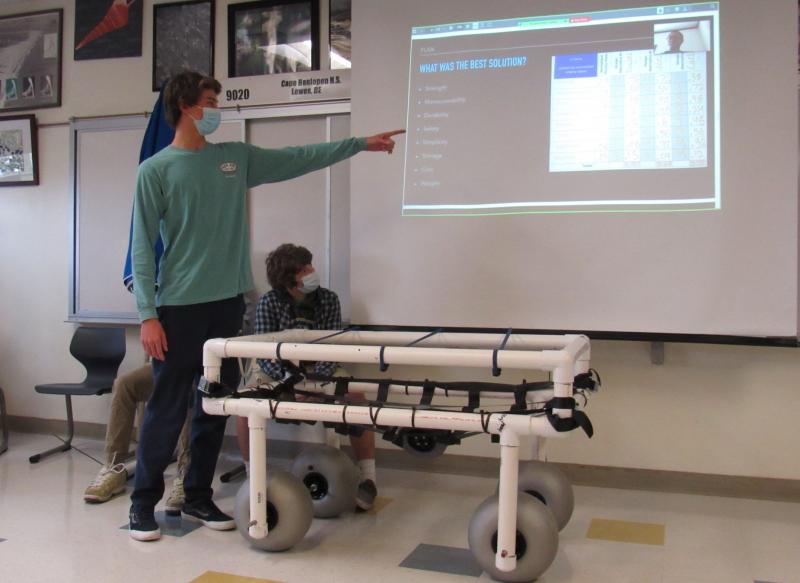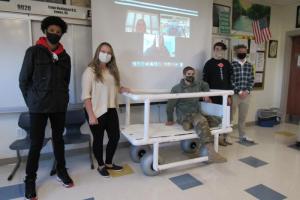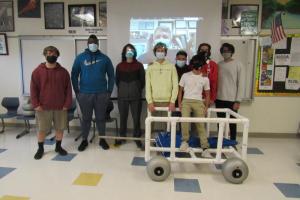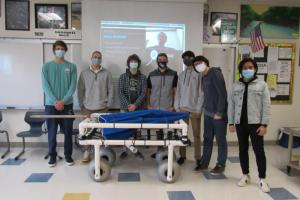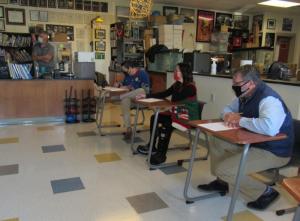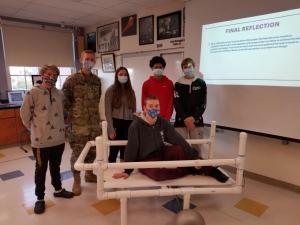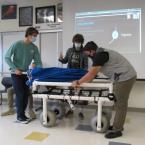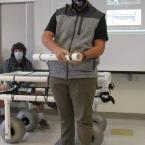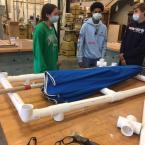Cape High students build caddies for beach shack workers
A Cape High teacher’s grumbling daughter prompted a new project for students that will also make life easier for beach shack workers in Dewey.
Science teacher Bill Geppert said his daughter, who works for Lynam’s Beach Service, was complaining last summer about clearing the beach of rented umbrellas and chairs at the end of the day.
Each chair weighs 25 pounds and each umbrella weighs 15 pounds, Geppert said, limiting the amount workers can safely carry, particularly when they are exhausted after a hot, busy day.
Geppert needed an activity for his engineering technology pathway students taking the advanced design applications course. Building a beach caddy to transport equipment was a perfect way for students to use the design process to solve a real-life problem.
“In the summer, when we get a thunderstorm and they have to get everything off the beach really quickly, they’re scrambling with one or two umbrellas and a chair, running back and forth,” he said. “I talked to Dave Lynam and he said, sure, they would use them on the beach.”
Student Ella Godbout said the class learned the design process last year, but COVID-19 curtailed applying it in real life. Despite limitations with some students attending school virtually and others in person this year, the class tackled the project and adapted assignments to fit student needs.
Delegation was the biggest part; students had to determine what tasks could be done remotely and what had to be done in the classroom throughout the months-long project.
“We had to figure out alternative ways to connect with different group members,” Ella said. “We started by making a text group chat with every member of the group. This created that bridge between hybrid and remote students. Our group decided to have hybrid students focus on the hands-on aspects of the cart while the remote students would focus on the digital aspect of the cart.”
Students developed criteria to use when designing and building the carts, following a formula in which they calculated the importance of each criterion based on student votes.
“This allowed for every student to express how they felt about the cart and what they wanted from it in a more comfortable setting,” Ella said. “Inevitably, we determined that ease of use, safety, weight, capacity and cost were the most important criteria to incorporate into our design.”
Geppert said students used a mathematical model to prove their designs would work. “They didn’t feel it was the best design; they knew mathematically it was,” he said. “That’s how real engineers work.”
Students researched which materials would work best; parts would have to be light, durable and rust-proof. They weighed chairs and umbrellas to determine what size PVC pipe and wheels to use, and added support beams to reduce stress on long PVC pipes.
In all, four groups designed four carts slightly different in design, but all under the $500 budget and tested to move easily across the sand while transporting up to 10 umbrellas and four chairs.
One group created a wheelbarrow-type cart; another built a four-wheeled caddy with a cargo net. One had a rope handle, and another was designed for the user to push or pull.
COVID-19 created more obstacles to overcome than in a typical year, Ella said.
“This has been such a challenging time, so being able to focus on a project-based learning activity that is intended to help us further understand the base of our course has been very helpful in immersing myself back into the learning environment,” she said.
Students are set to donate the carts to Lynam’s Beach Service later this year, Geppert said, and the workers can’t wait to use them.
“I think this gives us hope that our kids will make it through this pandemic and be successful,” Geppert said.











